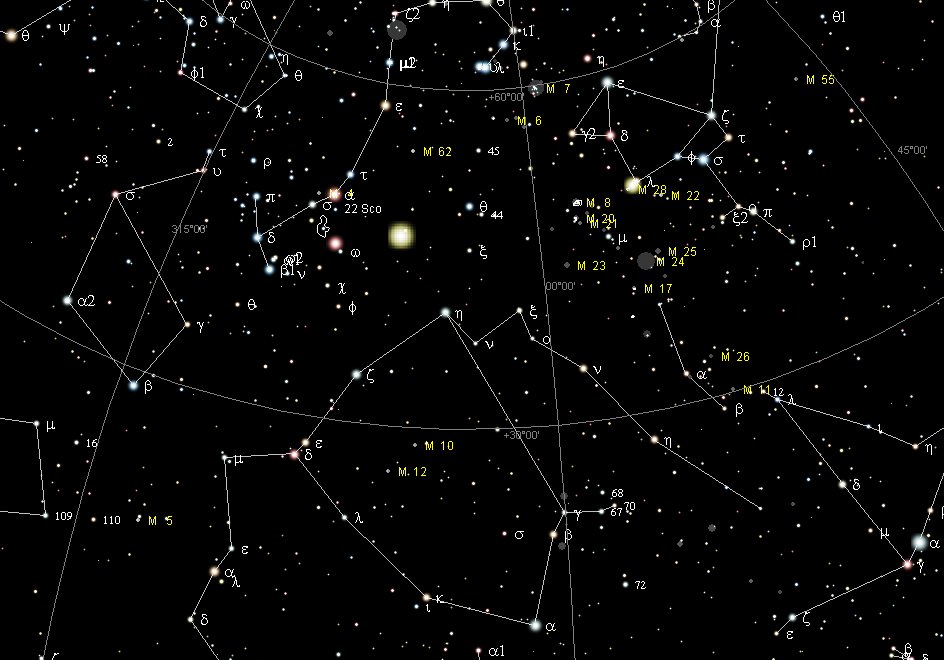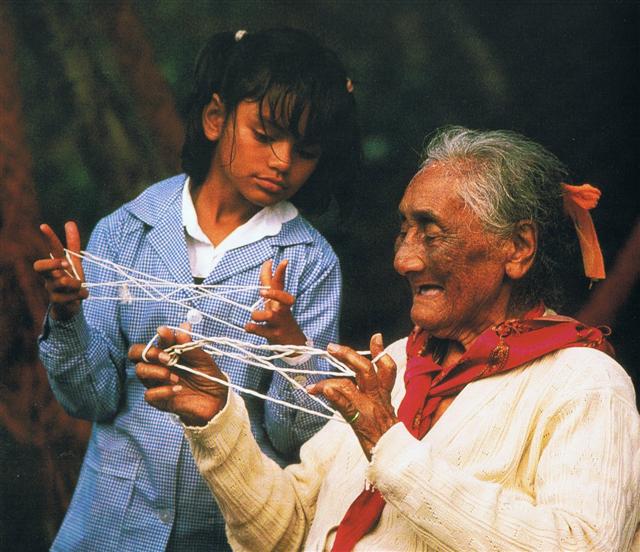84. Counting from the evening of April 14 (104, *24) AD 2023 where Mars had been destined to be visible at Mebsuta (*100, 180), to when in the evening of December 7 (*261) Mars would have advanced to right ascension day *249, there were *249 - *24 = *225 days:
Up to and including day 80 + 249 = 329 (November 25) - when the Sun was due to be at Antares and when Mars would be seen close to the ecliptic path at ω Ophiuchi.- there were 329 - 179 = 150 days, i.e. one more than 149:
... Time flows on and not until its measures have been completed in full can there be notches (nights) carved into the wood ... ... From the natives of South Island [of New Zealand] White [John] heard a quaint myth which concerns the calendar and its bearing on the sweet potato crop. Whare-patari, who is credited with introducing the year of twelve months into New Zealand, had a staff with twelve notches on it. He went on a visit to some people called Rua-roa (Long pit) who were famous round about for their extensive knowledge. They inquired of Whare how many months the year had according to his reckoning. He showed them the staff with its twelve notches, one for each month. They replied: 'We are in error since we have but ten months. Are we wrong in lifting our crop of kumara (sweet potato) in the eighth month?' Whare-patari answered: 'You are wrong. Leave them until the tenth month ... Counting with a pair of half-years (misseri) together measuring 364 nights = 52 weeks, ... In north Asia the common mode of reckoning is in half-year, which are not to be regarded as such but form each one separately the highest unit of time: our informants term them 'winter year' and 'summer year'. Among the Tunguses the former comprises 6½ months, the latter 5, but the year is said to have 13 months; in Kamchatka each contains six months, the winter year beginning in November, the summer year in May; the Gilyaks on the other hand give five months to summer and seven to winter. The Yeneseisk Ostiaks reckon and name only the seven winter months, and not the summer months. This mode of reckoning seems to be a peculiarity of the far north: the Icelanders reckoned in misseri, half-years, not in whole years, and the rune-staves divide the year into a summer and a winter half, beginning on April 14 and October 14 respectively. But in Germany too, when it was desired to denote the whole year, the combined phrase 'winter and summer' was employed, or else equivalent concrete expressions such as 'in bareness and in leaf', 'in straw and in grass' ... there could thus have been 7 * 52 - 2 * 150 = 64 nights remaining for the people of Rua-roa, or according to the Sun calendar 64 + 1 = 65 days.
... Another name for Mercury was Hermes and Hermes Trismegisthos (thrice-mighty) could have referred to the fact that there were 3.141 * 115.88 = 364.0 days for the cycle of the Earth around the Sun. Although the calendar has 365 days for a year this is due to the fact that the Earth has to turn around an extra day in order to compensate for how the direction to the Sun changes during a year ... Observing the current positions of the planet Mars, and beginning in the evening of April 14 (104), when Mars would be at Mebsuta, we have to wait until December 7 (341) in order to find Mars at the right ascension line ('string') for *249, which was connecting Antares with Ω Ophiuchi.
|
||||||||||||||||||||||||||||||||||||||||||||||||||






